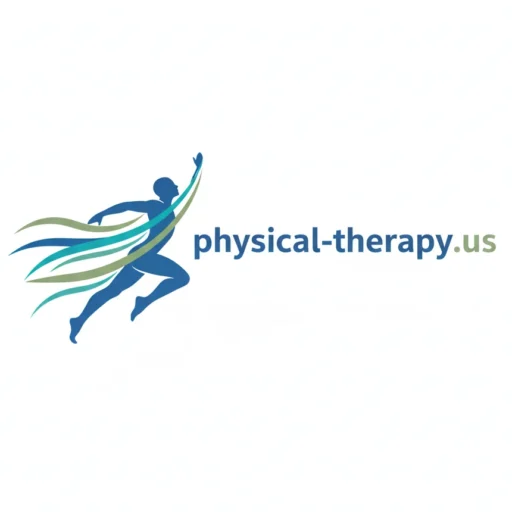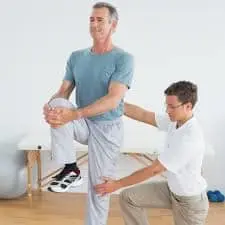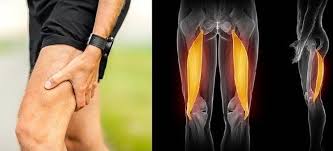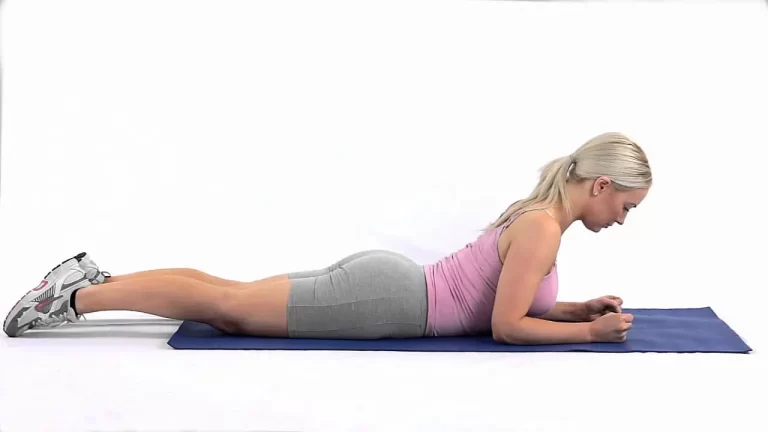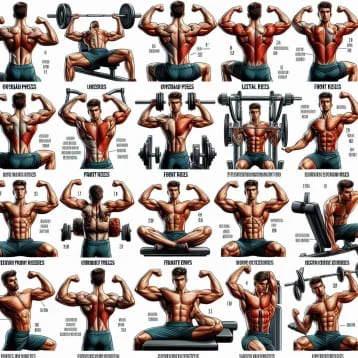15 Best Exercises For Biceps Muscle Pain
Introduction:
Biceps muscle pain is a common complaint among weightlifters, athletes, and individuals who engage in repetitive arm motions daily.
Bicep pain can be caused by a variety of conditions, including tendinosis, torn tendons, delayed onset muscle soreness (DOMS), and overuse of the arm.
It is quite common to experience biceps pain. The majority of people have at some point in their lives suffered from biceps pain, which can vary in intensity from mild to severe depending on the degree of injury. Your routine may be disrupted by biceps pain because it instantly affects your hands and arms.
Whether the reason is overuse, strain, or injury, biceps pain must be managed and recovered with rest, exercises for biceps muscle pain, and preventive care.
Causes:
Several factors, from mild usage to severe damage, can result in biceps muscle pain.
Degenerative Changes Associated with Age
- As people age, their tendons and muscles naturally weaken and tighten.
- Reduced elasticity and collagen.
- Tendon wear & tear.
Biceps Tendinitis
- Overhead motion repetition
- Incorrect posture or shoulder mechanics.
Injury from Overuse
- Performing repeated tasks every single day, such as lifting and pushing.
- Excessive exercise without rest.
- Poor posture or ergonomics.
Rupture or Tear of the Biceps Tendon
- Quickly lifting something heavy or extending your arm too much.
- Injury directly to the shoulder or arm.
Bicipital Bursitis
- Inflammation of the shoulder’s bursa close to the biceps tendon.
- Overuse, particularly when moving overhead.
Injury to the brachial plexus
- Given the location and severity of the damage, brachial plexus injuries may show up with a range of symptoms.
- Arm pain, numbness, and weakness.
Signs and symptoms:
The following are typical indications and symptoms of biceps muscle pain:
Upper arm pain
- It is frequently described as a difficult, painful sensation.
- Lifting or performing overhead duties could make it worse.
Inflammation and Swelling
- There could be some swelling across the upper arm or shoulder.
- The affected area could feel warm to the touch if there is tendinitis or inflammation.
Acute or Sudden Pain
- It may happen when there are severe injuries, like from sports or heavy lifting.
Sensitivity to Touch
- Usually, palpation indicates pain near the elbow or shoulder, where the biceps tendon attaches.
Weakness in Muscles
- Inability to rotate the forearm or bend the elbow (e.g., twisting a doorknob).
The sensation of clicking or popping
- When the arm is raised or rotated, it may be felt or heard.
Reduced Range of Motion and Stiffness
- Difficulty rotating the arm or raising it upwards.
Benefits of exercise:
When done properly and in keeping with the stage of healing, exercising when experiencing biceps muscle pain can be quite advantageous. Restoring strength, encouraging recovery, and avoiding further injuries are the goals.
Encourages Circulation and Healing
- Blood flow to the impaired area is increased by low-impact motions.
- Lowers inflammation and gets rid of waste from metabolism.
Increases Range of Motion
- Restoring complete arm and shoulder movement is made easier by mobility exercises and stretching.
- Limits compensatory motions that may result in more harm.
Lessen Chronic Pain
- Through the promotion of muscle balance and the reduction of tendon tension, regular, controlled rehabilitation exercises can help reduce chronic pain.
Enhances Muscle Flexibility and Decreases Stiffness
- To avoid shoulder and elbow stiffness, do mild range-of-motion exercises.
- Ensures that the surrounding muscles and tendons remain flexible.
Promotes Mental Health
- During recovery, being active helps keep you motivated and avoids frustration.
- Endorphins, which are released during physical activity, can help control mood and feelings of pain.
Avoids Re-injury
- Joint stability is increased by strengthening the biceps as well as the supporting muscles (deltoids, rotator cuff, and forearm muscles).
- Improves posture when moving and muscle coordination.
Restores Muscle Power Slowly
- After an injury, strengthening workouts help to regenerate the biceps muscle.
- Stops muscular atrophy, or wasting, caused by inactivity.
- Assists in regaining full function of the arm.
The following safety advice should be followed before starting an exercise program:
The correct exercises will be selected by a doctor or physical therapist for your specific issue. To maximize the benefits of any health program, think about a few safety precautions even before starting.
Instead of pushing yourself if anything feels strange, listen to what your body is telling you. While pain is a normal side effect of exercise, excessive or persistent pain may be a sign of overwork. Start with low-impact exercises to improve your ability to handle pain, then work your way up to more challenging ones.
Exercises For Biceps Muscle Pain:
Wall Stretch
- Get into a standing position first.
- Place your left palm up against a solid surface, such as a wall.
- Extend your body slowly away from the wall after that.
- Your arm, shoulder, and chest should all feel stretched.
- Hold this position for a few seconds.
- Then return to your neutral position.
- Then relax.
- Repeat these exercises 5 to 10 times.
 Biceps wall stretch
Biceps wall stretch
Biceps Curl
- Begin by standing on the ground.
- Make sure your abdominal muscles are working.
- Each hand ought to have a dumbbell.
- Lower your arms to your sides.
- Maintain your hands facing up.
- While lifting, release your breath.
- Hold this position for a few seconds.
- Then return to your neutral position.
- Then relax.
- Repeat these exercises 5 to 10 times.
 Biceps Curl
Biceps Curl
Isometric Biceps Exercises
- Begin by taking a seat at the table.
- Lift your working arm so that its forearm is approximately parallel to your body.
- Place your resting arm around the working arm’s wrist.
- Try to curl your working arm upward while using your off arm to resist the motion.
- Hold this position for a few seconds.
- Avoid rounding your upper back.
- To provide a solid foundation for your arms to pull from, carefully pull your shoulder blades together.
- Then return to your neutral position.
- Then relax.
- Repeat these exercises 5 to 10 times.
 Isometric Biceps Exercises
Isometric Biceps Exercises
Sleeper stretch
- Start by resting on the affected side.
- Extend your elbow from your shoulder straight.
- Ensure that your arm is elbow-bent.
- Hold your arm in this L-shaped position.
- On the other hand, drop your arm to the floor.
- Apply as much pressure as is comfortable.
- Hold this position for a few seconds.
- Then return to your neutral position.
- Then relax.
- Repeat these exercises 5 to 10 times.
 Sleeper Stretch
Sleeper Stretch
Shoulder Rolls
- To begin, take a standing stance on the floor.
- Breathe deeply, lifting your shoulders to your ears.
- Then squeeze your shoulder blades.
- Hold this position for a few seconds.
- Then return to your neutral position.
- Then relax.
- Repeat these exercises 5 to 10 times.
 Shoulder Roll
Shoulder Roll
Pendulum Arm Swings
- Begin by standing on the ground.
- The healthy hand should then be placed on the table.
- Your affected arm then swings down towards the floor while your hips bend.
- Your arm should swing easily from front to back as you shift your weight forward and backward.
- After you feel comfortable performing these movements, rotate your body till your arm rotates in a circle.
- Do not make the circle too big.
- Then return to your neutral position.
- Then relax.
- Repeat these exercises 5 to 10 times.
 Pendulum Exercise
Pendulum Exercise
Wall Push-Ups
- Stand with your feet hip-width apart.
- Touch the wall with both hands.
- Keep your fingers pointing towards the ceiling.
- Your feet should be closer to the wall if you feel like you’re reaching too far.
- Place your body against the wall.
- Then gradually bend your elbows.
- Right up until your nose nearly touches it.
- Hold this position for a few seconds.
- Then return to your neutral position.
- Then relax.
- Repeat these exercises 5 to 10 times.
 Wall Push-up
Wall Push-up
Hammer Curls
- Pick up a pair of dumbbells.
- Hold them by your sides as you rise.
- Next, keep your hands in a neutral grip while bending your arms slightly.
- Slowly curl the dumbbells as high as you can while keeping your hands on your body.
- Hold this position for a few seconds.
- Then return to your neutral position.
- Then relax.
- Repeat these exercises 5 to 10 times.
 Hammer curls
Hammer curls
Resistance Band Biceps Curl
- Get started by standing on the floor.
- After that, stand atop the band.
- Make certain that the band is uniformly spaced on both sides.
- Straighten your arms, reach down, and grab the handles with your underarms.
- So that your palms face away from your body while your hands are at thigh height.
- Maintaining your arms close to your body can help you brace your glutes and core.
- To do a curl with both arms, squeeze your biceps and step your right foot out to shoulder-width.
- Hold this position for a few seconds.
- Then return to your neutral position.
- Then relax.
- Repeat these exercises 5 to 10 times.
 resistance band biceps curl
resistance band biceps curl
Forearm Supination and Pronation
- Start with a standing position.
- Keep your arm by your side.
- Next, bend your elbow.
- Make sure your palm is pointing downward by rotating your wrist and forearm.
- Hold this position for a few seconds.
- After that, rotate your forearm and wrist in the opposite direction so the palm is facing up.
- Hold this position for a few seconds.
- Then return to your neutral position.
- Then relax.
- Repeat these exercises 5 to 10 times.
 Forearm Supination and Pronation
Forearm Supination and Pronation
Shoulder Circle Crossover
- Get started by standing on the floor.
- Next, extend your arms to the sides.
- Your shoulder blades should come back together.
- To further expand your shoulders, move your arms back behind you.
- Raise your two hands in front of your head.
- After the two hands have touched, cross them in front of you until they are horizontal.
- Turn the motion around until your palms are facing backward behind you.
- Then return to your neutral position.
- Then relax.
- Repeat these exercises 5 to 10 times.
 shoulder circle crossover
shoulder circle crossover
Shoulder Flexion
- Standing on the ground should be your initial move.
- Next, raise your arm upwards and above the ceiling.
- Hold this position for a few seconds.
- Then return to your neutral position.
- Then relax.
- Repeat these exercises 5 to 10 times.
 Single shoulder flexion
Single shoulder flexion
Elbow band
- Look for a spot where you can stand comfortably.
- Take a deep breath.
- Lift your arm and bend it slowly.
- Take a few moments to hold this position.
- Take your arm down.
- Then return to your neutral position.
- Then relax.
- Repeat these exercises 5 to 10 times.
 elbow-bend-exercise
elbow-bend-exercise
Side-lying external rotation
- On a bed, you can lie on the side that is affected.
- Press your forearm palm on your chest.
- Then bend your elbow 90 degrees.
- Raise the forearm to shoulder level.
- Hold this position for a few seconds.
- Drop your hand slowly.
- Then return to your neutral position.
- Then relax.
- Repeat these exercises 5 to 10 times.
 side-lying-external-rotation
side-lying-external-rotation
Passive External Rotation
- Standing upright on the ground.
- Inhale deeply a few times.
- Use one hand to hold the stick.
- The other end is then grasped with another hand.
- Keep extending your side of the body while holding the stick straight until you sense a slight pressure.
- Hold this position for a few seconds.
- Then return to your neutral position.
- Then relax.
- Repeat these exercises 5 to 10 times.
 Passive-external-rotation-workout
Passive-external-rotation-workout
Which precautions need to be followed when working out?
To prevent worsening the injury and to help in recovery, it’s essential to take a few measures when exercising, particularly if you’re having biceps pain.
The following is a detailed list of safety measures to take:
Make sure you properly warm up.
- Before beginning your workout, spend five to ten minutes engaging in modest aerobic exercises and active stretching.
Apply the Correct Form
- Biceps tendon stress is increased, and injury risk is increased by poor form.
- Don’t Lift Heavy Things
Use lightweight
- To maintain activation without overstressing the muscle, perform more repetitions with a lighter weight.
Stretch and cool down.
- After working out, just a little stretching might help reduce stress.
- Stretches for the biceps that are gentle can help with blood flow and recovery.
Pay Attention to Your Body
- Stop exercising and think about visiting a doctor or physical therapist if the pain gets worse or spreads.
Use heat or ice.
- Ice: Using ice can help minimise swelling, particularly in the 24 to 48 hours after the incident.
- Heat: If inflammation is not present, it could help relax tense muscles.
Get some rest and recover.
- Until the pain goes away, stay away from strong or severe biceps exercises.
When did you stop exercising?
Exercise should be stopped right away if you encounter:
Acute or Unexpected Pain
- Rest and perhaps medical help are necessary for localized pain that gets worse with movement.
Weakness or Decrease in Power
- If you can’t lift as much as you usually can or your arm feels weak all of a sudden, stop.
Inflammation or bruising
- Any visible swelling, redness, or bruises near the elbow or biceps could be signs of tissue damage.
Popping or Snapping Noise
- You need to pause and get medical advice since this is serious.
Chronic Pain Following Exercise
- Consider taking a break and consulting a physician or physical therapist if the pain persists for more than 48 to 72 hours following your workout, especially if there are no indications that it is getting better.
Which workouts should you stay away from if you have biceps muscle pain?
It’s important to adjust or temporarily stop specific workouts when you have biceps pain, whether it’s due to tendinitis, a muscular strain, or even general overuse, to stop further damage and promote healing.
Depending on the kind and intensity of your biceps pain, you will need to avoid certain movements.
- To prevent compressing the biceps tendon, refrain from lifting objects or doing activities (such as overhead presses) that require your arm to bend past 90 degrees.
- Heavy Lifting: When doing bicep curls or heavy lifting, stay away from utilizing big weights that put a lot of strain on your biceps.
- Push-ups: These can strain the shoulder and biceps. You should only start with wall push-ups or knee push-ups once you are comfortable.
- Exercises that target the back, such as barbell, dumbbell, and cable rows, might make pain worse if they are heavy or require extensive elbow flexion and bicep strain. The risk will also be increased by improper form.
- Chin-ups, also known as supinated grip pull-ups, are a back exercise that also extensively works the biceps because they require a strong supinated (palms facing you) grip. The biceps tendon close to the shoulder may be severely strained by the whole range of motion, particularly at the bottom stretched position.
- Biceps pain is frequently caused by repetitive overhead motions, which are a prevalent feature of sports like baseball (throwing), tennis (serving), swimming, volleyball, and gymnastics. If you participate in these activities, you might need to take a break or lower the intensity.
Summary:
Located in the upper arm, the biceps muscle is a crucial prime mover for the body. In order to do daily tasks like pushing and pulling stuff, lifting and moving things, and extending the arm, it is responsible for flexing the elbow.
Depending on the underlying reason, biceps muscle pain can present in a number of ways. People with varying levels of exercise can be affected by this prevalent illness. Overuse, recent trauma, or underlying diseases like inflammation or biceps tendon tears can all cause pain in this region.
The biceps are a crucial muscle that allows us to flex our elbows and carry out daily activities. To get maximum benefit out of bicep training, you need to adopt the right form and technique. It may be trained with both resistance and bodyweight movements.
FAQ:
What is the duration of bicep pain following exercise?
Muscle pain usually rises on day three and then begins to lessen. You pushed your muscles a bit too hard, which is why you are uncomfortable if it lasts more than three days. However, persistent pain in the muscles may potentially indicate an injury.
How long should a person who has bicep muscle soreness take it rest?
Activities that worsen symptoms, including lifting things high, should be avoided in the meantime. Mild cases of pain require approximately six weeks to heal on their own.
I have bicep soreness; can I still have an exercise routine?
To alleviate bicep pain, the most crucial thing you can do is to relax. When performing any workout, if you experience pain, stop and take a break.
What causes pain in the biceps muscles during or after working out?
Excessive strain or use;
Incorrect form during exercise
Not stretching or warming up
Muscle tears or tendinitis
Which workouts are safe for relieving biceps pain?
Biceps stretches
Light resistance band curls
Isometric holds (without movement)
Gentle massage or foam rolling
Use calm, careful motions and minimal resistance at all times.
Which things should I avoid when trying to strengthen my biceps?
Heavy lifting
Arm exercises with a lot of intensity
Jerky or rapid motions
There can be serious consequences if pain signals are ignored.
What causes pain in the biceps muscles?
Repetitive action or overuse
Tension or rupture of a muscle
Tendonitis
Tendon rupture in the biceps
Exercise is done incorrectly.
Direct damage or injury
If my biceps hurt after exercising, what could I do?
Give your muscles a break.
To lessen swelling, apply ice. If there is swelling, apply compression and elevate the affected area.
Take over-the-counter painkillers, such as ibuprofen.
When should I visit a physician?
Pain lasts more than a week.
You are severely weak or have limited mobility.
There are noticeable deformities or bruises.
The ache is intense and sudden.
There is tingling or numbness.
What can be done to avoid biceps pain?
Before beginning your activities, make sure you have warmed up thoroughly.
While working out, use proper form. Don’t overwork; include recovery days. Strengthen the muscles around you (back, shoulders) and do frequent stretching.
Can biceps muscle pain recover by itself?
Tears that are partially healed may require protection while they heal. Due to the fact that the biceps muscle pulls the tendon up into the arm, complete tears in the tendon do not recover themselves.
References:
- Details are provided in the explanation of the Top 7 Bicep Tendon Inflammation Exercises by Dr. Mehta. April 7, 2025. https://www.resilienceorthopedics.com/shoulder/bicep-tendonitis-exercises/ Resilience Orth
- July 30, 2021: Barrell, A. Tips for dealing with lower bicep pain. This article from Medical News Today describes lower biceps pain.
- 2024a, July 22; Barrell, A. Factors that contribute to biceps pain and how to address it. Middle-of-bicep pain: https://www.medicalnewstoday.com/articles
- January 19, 2024: Evans, J. Simple at-home workouts for biceps pain relief. Individualised Physical Therapy. https://protailored.com/simple-at-home-exercises-to-alease-biceps-pain/
- Administrator, September 26, 2023. Strength training workouts for the biceps tendons. Advanced Spine and Sports. Exercises for the biceps tendon – https://www.advancedsportsandspine.com/
- S. Physio (n.d.). Surrey Physio’s Top 5 Biceps Strengthening Exercises. Surrey Physio. https://www.surreyphysio.co.uk/top-5/top-5-events-for-biceps-strengthening
- On September 22, 2022, P Rehab. Biceps muscle pain workouts and treatment options. Biceps Tendon Pain Exercises [P]Rehab. https://theprehabguys.com/
- June 24, 2019; Cronkleton, E. When working out, you can use these six bicep stretches. http://healthline.com/health/bicep-stretch Health Line
- J. Evans (2024a, 19 January). Biceps ache. Individualised Physical Therapy. PT health advice: https://protailored.com/relieve-your-bicep-pain-with-physical-therapy/
- Image 3, 3,SportsInjuryClinic.net. September 14, 2011. [Video] Isometric bicep exercises for the arms and elbows. On YouTube.
